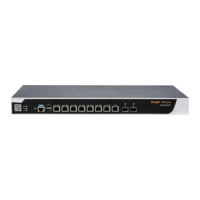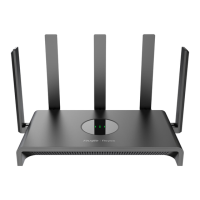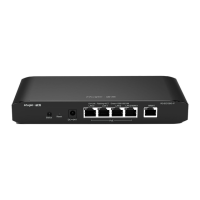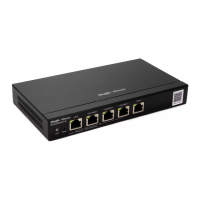Cookbook Getting Started
16
A high temperature will accelerate the aging of insulation materials and compromise the reliability and even
service life of the router.
Table 2-1 lists temperature/humidity requirements. For more information about differences between products,
see "Product Overview".
Table 2-1 Temperature and Humidity Requirements of Ruijie RG-NBR-E Series Routers
Long-term working
condition
Short-term working
condition
Long-term working
condition
Short-term working
condition
15°C to 30°C (59°F to
86°F)
0°C to 45°C (32°F to
113°F)
Note
The working temperature or humidity indicates the value measured at 1.5 m above the floor and 0.4 m
ahead of the equipment frame when there is no protection plate on the front and rear side of the
equipment frame.
The short-term working condition indicates the situation where the router has been working continuously
within 48 hours or the accumulative device operation period does not exceed 15 days in a year.
2. Cleanliness Requirements
Dust is also a major threat to the safe operation of the router. If dust falls on the device body, it will cause
electrostatic adsorption and poor contact of metal contacts. In particular, when the indoor relative humidity is low,
electrostatic adsorption may easily occur. This affects the service life and easily result in communication failures.
Table 1-15 lists the dust content and particle size requirements in the equipment room.
Table 2-2 Equipment Room Dust Content and Particle Size Requirements of Ruijie RG-NBR-E Series
Routers
Dust particles (particle diameter ≤ 0.5 μm)
Dust particles (0.5 μm < particle diameter ≤ 1 μm)
Dust particles (1 μm < particle diameter ≤ 3 μm)
Dust particles (3 μm < particle diameter ≤ 5 μm)
Apart from the dust, the device is also sensitive to the hydrochloric acid sulfide contained in the air. These
noxious gases will accelerate metal wastage and the aging of certain parts. Table 1-16 lists the upper limits of
noxious gases (sulfur dioxide, sulfured hydrogen, nitrogen dioxide, ammonia, and chlorine) in the equipment
room.

